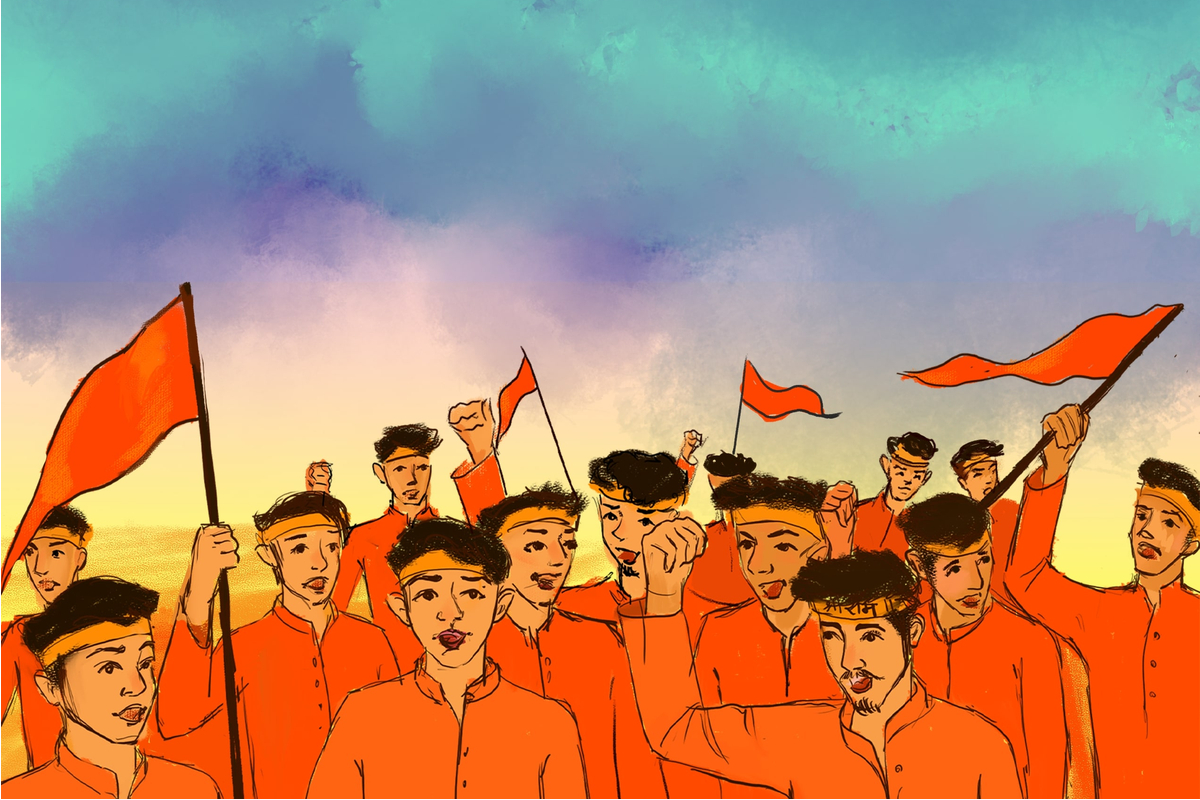[ad_1]
In the lunar calendar of Bikram Sambat, the month of Poush is called Kharmaas and is considered a bad omen month. But Poush is considered auspicious for political adventures as it is also the month of Lord Vishnu, the most cunning deity of the world. Hindu trinity. Perhaps some calculating astrologers advised King Mahendra to organize the royal-military takeover on December 15, 1960, the first day of Poush in BS 2017. The day is etched in the memory of nearly three generations of Nepalese like Putsch Ek, the first coup in modern history.
The loyalists of the Shah dynasty of the thar-ghar aristocracy, some vestiges of the old regime and some ambitious city dwellers of the White Shirt variety turned Poush in a month’s chauvinistic nationalism. The explosion of xenophobia and chauvinism under the guise of nationalism begins with the veneration of the statue of King Mahendra in Durbar Marg on the day he strangled the nascent democracy. The nationalist fervor continues with the worship of King Birendra at the Jawalakhel roundabout on the occasion of his birthday. In addition to giving post-facto legitimacy to his father’s seizure of power through the referendum in 1980 he is remembered as the king whose “reign began in absolutism and ended in a difficult partnership with democracyâ€.
Fanaticism reaches a crescendo with Prithvi Jayanti who praises the victorious ruler of Gorkha who forced amalgam various principalities and created what he called “Asali Hindusthana” with the valley of Nepal as its capital. It is conveniently forgotten that the original version of the royalist national anthem prayed for “Great victory to us Gorkhali, always keep control over Nepal, with bravery”. Gorkhalis’ plea was amply rewarded. The nobility of Gorkha’s house and their supplicants continue to exercise hegemonic control over politics and society. No wonder all ethno-nationals wish a national holiday in Prithvi Jayanti.
In the month of Poush, the chauvinistic rash on a statement Indian actor Hrithik Roshan never made, has driven the wedge between the Pahadi and Madhesi communities deeper into the psyche. Social media neo-nationalists have since coined another day in Poush to display their ethnic pride: the so-called “International Dhaka Topi Day” which is to be celebrated on the New Year of the Gregorian calendar. The combustible mixture of religion and politics, on the model of the Hindutva ideology in India, risks widening the gap between the various Nepalese communities and aggravating the drifts of governance.
reactionary mainstream
From the outside, the political sphere of Nepal seems bathed in the crimson of revolutions. The Nepalese Congress continues to swear by socialism, and its president Sher Bahadur Deuba currently heads the coalition government. The United Socialist Party, the CPN (Maoist Center) and the Socialist People’s Party are alliance partners of Prime Minister Deuba. The main opposition party in Parliament calls itself the Unified Marxist-Leninist. Like many ideologues of the United Socialist Party and the Maoist Center, senior UML officials have been trained in Xi Jinping thought by Chinese experts. The most vocal members of the legislature belong to the Workers and Peasants Party of Nepal, which publicly admits its admiration for the ideology of Juche from North Korea.
There is another pigment that binds almost all mainstream political parties together: the yellow of ethnonationalism. Together, the progressive red and the conservative yellow produce the orange tint reactionaries. With the possibility of a vertical split between pro-monarchy and pro-Hindutva forces, the Panchas political platform appears to be losing ground. However, the religion-centric ideology of the Rastriya Prajatantra party centralism hindutva– “One country, one state, one legislature, one executive” in the rhetoric of MS Golwalkar from Rastriya Swayamsevak Sangh– has been integrated.
The royal nationalism of the Panchayat years which insisted on the homogenization of the country through “one language, one costume and one sovereign in the field” was reinvented in 2017 through “Oliological arguments” which are neither logical nor illogical but purely stubborn. The demagogic populism of neo-nationalism plays on the xenophobia inherent in a country widely perceived by its people as weak. It incites chauvinistic fervor to oppose federalism, challenge inclusion and hate secularism. the Moditva governance model adds crony capitalism, strongman leadership, and critical intolerance to the core Hindutva ideology. Despite the anti-Indian postures of the political class, Moditva’s appeal turns out to be almost as strong as the fascinating promises of Xi Jinping’s thought once were.
Regressive leftism
The success of the Chinese experiment in political economy has shown that a totalitarian government must eliminate market competition to institutionalize state capitalism. The model of crony capitalism requires a slightly different but similar process of centralized control: a combination of ethnonationalism and majority authoritarianism in politics, an almost total reliance on remittances in the economy, and the making of the imaginary glory of the world. past in culture produces a demagogic desire to consume. populism alt-right in Nepal. Former Prime Minister Khadga Prasad Sharma Oli, ethno-national leader of the combative section of the Khas Arya community across party lines, sees no contradiction between the rhetoric of Marxism-Leninism and the improvised advertising of Hindustva slogans. The outdated Maoist Pushpa Kamal Dahal retains the idea of ​​centralized control but greedily kissed saffron policy of a multi-billion dollar trader Ramdev.
Alarming as they are, the affinity of Bahun politicians with Hindutva ideology is not entirely surprising. Reaffirming existing prejudices, inciting collective narcissism and glorifying an imagined past are some of the proven ways to get into politics quickly. A section of the Nepalese Congress has also consistently insisted on the Hindu rastra theory without realizing that it is intrinsically incompatible with its project of democracy, socialism and nationality. The hierarchy of castes intrinsic to Hindu Rashtra is the opposite of the four pillars of republican aspirations: equality, freedom, fraternity and secularism. Socialism, even diluted, requires placing the state above the religious authority of priests and preceptors of the faith. The notion of civic nationalism in a culturally multinational society, cannot survive with the major steamroller of hegemonic uniformity.
According to census data and updated estimates, almost 14 percent of Nepalese are Dalits, a little more 35 percent are Janajatis, near 5 percent are Muslim and over 1% are Christians. Many other Hindus working in distant lands have to learn to eat meat traditionally prohibited in the Hindu faith. In such a diverse population, it makes no sense to ban beef and criminalize the slaughter of cows in the name of the policy of Sanatan Dharma. India is going through the double process of “Kashmir” and “Gujaratification”, institutionalizing a rigid police state and intolerance of diversity. Arzoo Rana Deuba is free to dress in saffron and invite his “brother Rakhi” Vijay Chauthaiwale. There is nothing wrong with the first Deuba’s to assist the annual Vibrant Gujarat jamboree. But Nepalese politicians must be careful playing with the fire of hate attacks Hindutva and activist Islamism in the South Asian quarter.
[ad_2]


